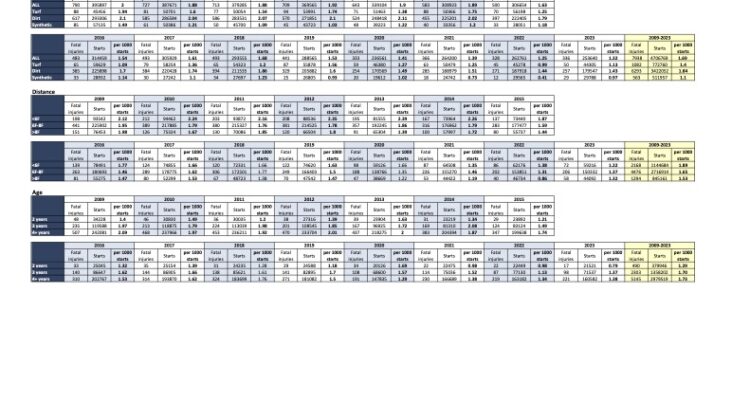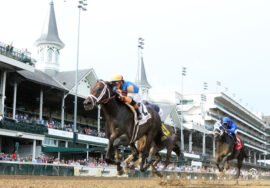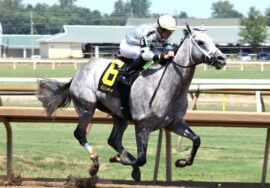
The Jockey Club Releases Data from the Equine Injury Database for 2023
A Jockey Club press release
Fatalities down 34% since database began in 2009
According to the initial data analysis from the 15th year of reporting to the Equine Injury Database (EID), the rate of fatal injury in 2023 was 1.32 per 1,000 starts, the second-lowest rate of fatal injury since the EID began in 2009. This is the fourth consecutive year that the rate of fatal injury has been below 1.5 fatalities per 1,000 race starts. The rate of fatal injury increased slightly from 2022, which has the lowest rate of incidence since 2009 of 1.25 fatalities per 1,000 starts.
Analysis of the EID was provided by Professor Tim Parkin (University of Bristol), who has consulted on the EID since its inception, and by Dr. Euan Bennet (University of Glasgow).
“There was a slight increase in the rate of fatality from 2022 to 2023 of 5.6%,” Parkin said. “However, this is not statistically significant, and we are encouraged by the low numbers in 2023 that the industry is still headed in the right direction with regard to keeping its horses safe.”
Statistical Summary from 2009 to 2023
(Thoroughbred Flat Racing Only)
| CalendarYear | 2009 | 2010 | 2011 | 2012 | 2013 | 2014 | 2015 | 2016 | 2017 | 2018 | 2019 | 2020 | 2021 | 2022 | 2023 | ||||||||||||||||
| Rate | 2.00 | 1.88 | 1.88 | 1.92 | 1.90 | 1.89 | 1.62 | 1.54 | 1.61 | 1.68 | 1.53 | 1.41 | 1.39 | 1.25 | 1.32 |
When compared to 2009 (2.0 fatalities per 1,000 starts), 2023 shows a 34% decrease in risk of fatal injury.
“This change is statistically significant (p<0.001),” Parkin said. “This is equivalent to 171 fewer horses sustaining a fatal injury racing in 2023 than would have occurred had the number of starts remained constant since 2009.”
Key statistics from the 2023 analysis are as follows (figures represent the incidence of racing fatality per 1,000 starts):
- By age
- 2-year-old: 0.79
- 3-year-old: 1.37
- 4+-year-old: 1.38
- By race distance
- <6 furlongs: 1.22
- 6 – 8 furlongs: 1.37
- >8 furlongs: 1.32
- By track surface
- Dirt: 1.43
- Turf: 1.13
- Synthetic: 0.97
For trends of the EID since 2009, please visit jockeyclub.com/pdfs/eid_15_year_tables.pdf.
The EID statistics are based on injuries that resulted in fatalities within 72 hours from the date of the race. The statistics are for official Thoroughbred races only and exclude steeplechase races. Summary statistics for the EID are subject to change due to a number of considerations, including reporting timeliness. All data entered into the EID goes through a multilevel quality control process to ensure the data is completely and accurately reported.
The list of racetracks participating in the EID and detailed statistics from those tracks that voluntarily publish their results can be found at jockeyclub.com/default.asp?section=Advocacy&area=11.
The Equine Injury Database, conceived at the Grayson-Jockey Club Research Foundation’s first Welfare and Safety of the Racehorse Summit, was launched by The Jockey Club in July 2008 and seeks to identify the frequencies, types, and outcomes of racing injuries using a standardized format that generates valid statistics, identifies markers for horses at increased risk of injury, and serves as a data source for research directed at improving safety and preventing injuries.












